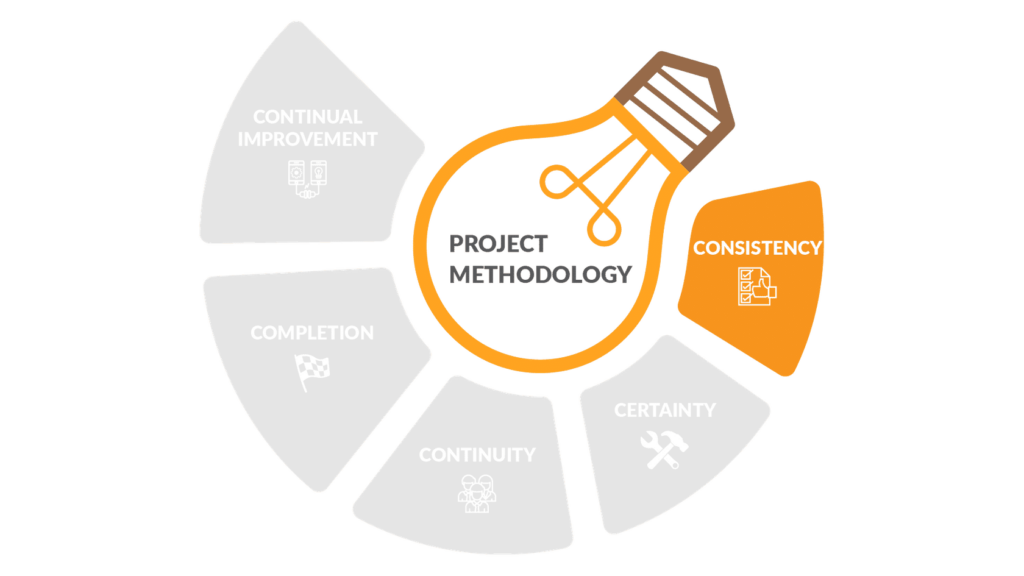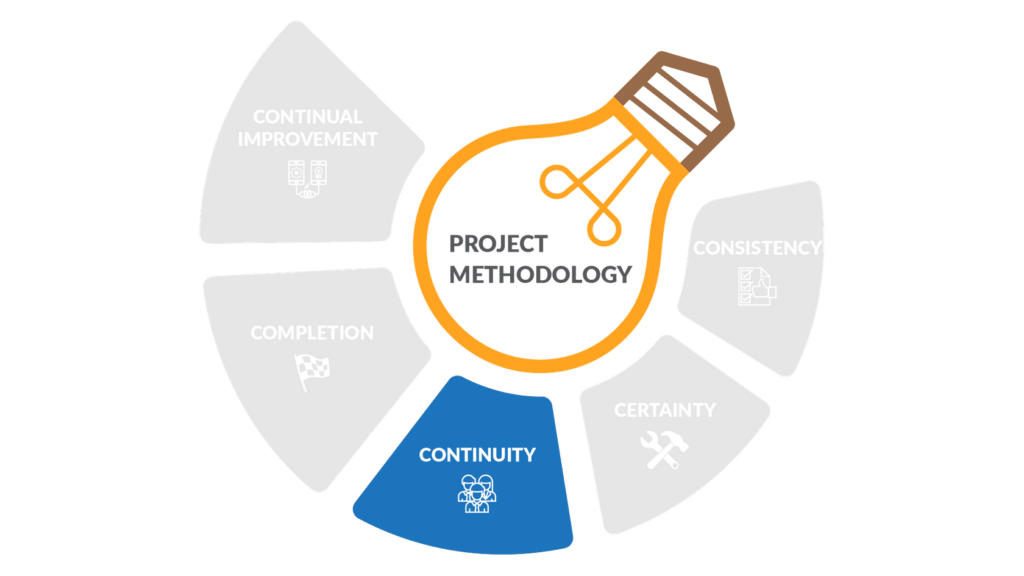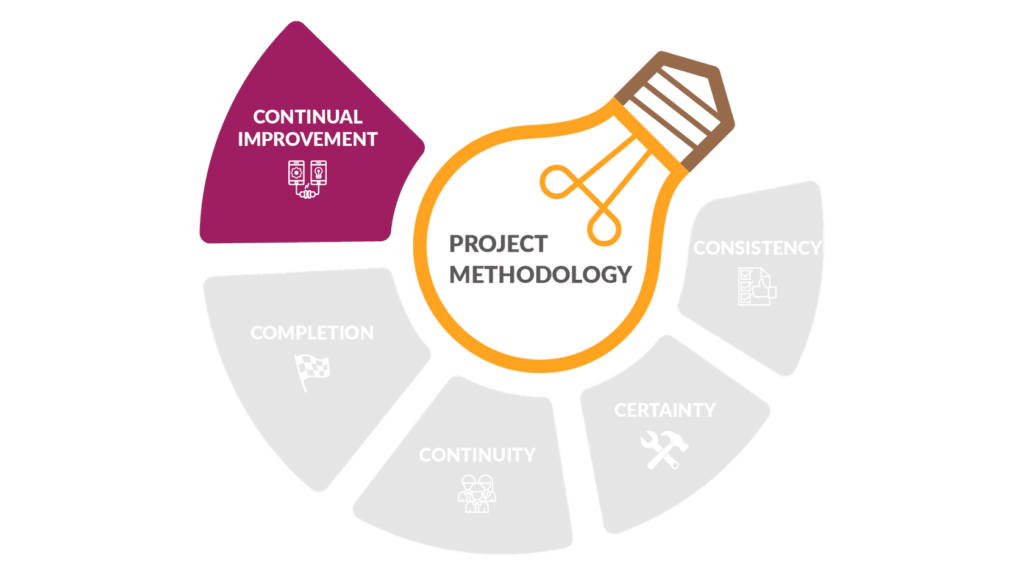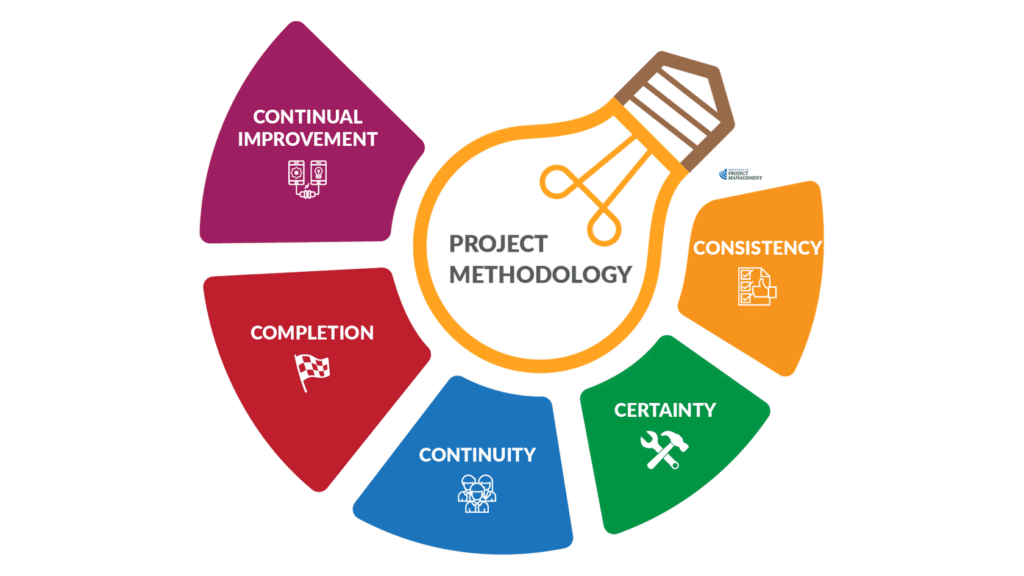The benefits of methodology
A methodology is a body of common practices, procedures, tools and techniques.
A project management methodology is therefore the sum of the knowledge, resources, and assets that an individual or organization might acquire and apply to assure the successful delivery of their projects.
The good news is that over the last 50 years or so, project managers have made a concerted effort to professionalise their discipline.
At the core of this has been the development of some universal standards for the management of projects.
These standards can be literally bought off the shelf and applied to your projects today, saving you thousands of hours of time, effort, and mistakes to learn from.
The benefits of applying project management methodologies include:
Consistency

A methodology is foremost a communication asset, enabling a common language for project management in the workplace.
Within that framework, standardized (templated) project tools enable consistent reporting and accountability across programs and portfolios.
This ensures stakeholders and decision-makers do not have to reinvent or reinterpret organizational processes for each new project.
Certainty

Adhering to a methodology better guarantees resources are available when needed and project delivery is on-time and on-budget. Promises made to stakeholders are also easier to keep.
Documenting project decisions within this framework can also protect the project manager if there is a dispute about what has been agreed.
With established processes in place, problems are solved faster, there is greater compliance with organizational and regulatory standards, and less re-work is required.
Continuity

Project documents and the methodology that embraces them are a convenient and effective way of keeping project stakeholders up-to-date, acting as the project’s ‘single source of truth’.
A well-documented and maintained methodology facilitates a smooth transition when project personnel, requirements, or even the operating environment change.
Completion

All of this means that projects are delivered faster and benefits are realized earlier, reducing investment costs and enhancing your organization’s reputation.
This ultimately has a positive impact on organizational performance and staff morale.
Continual improvement

Post-implementation, methodology outputs become a knowledge base for the organization, a library that can be built on to template future project delivery and enable a culture of project excellence.
Organizations that operate without a formal project methodology will always find it harder to learn from failure and leverage success.

Project policies
Other documents that may support the project plan include the more static policy guidelines of your organization.
A policy is a set of rules for doing business (how we do things); whereas, the documents we refer to here usually encode a specific set of actions (what we do)
Policies stipulate, among other things, communications strategy, procurement strategy, staffing procedures, and change control processes.
Within these policies, you might find direction on (for example) delegated authority or spending limits, agreed methods for conducting estimating or risk analysis, escalation processes (in other words, where to turn when things go wrong), and items like presentation style guides and glossaries of common terms.
Because these guidelines are usually specific to the performing organization and the projects it delivers, we do not attempt to list them all here definitively.
That is not to say, however, that policies are not important – like any organizational process, they constrain what you can do in your project but also offer you valuable guidance and support.
Policy development is best considered in the context of programs and portfolios of work. It is beyond the scope of a project management course. If you do not have clear project policies in your organization, try Googling standards to find what best suits your project context.
In the absence of specific policy guidance from your organization, we will introduce you in this course to a number of good-practice project documents that you can align to the policy context of your organization and the projects it delivers.




